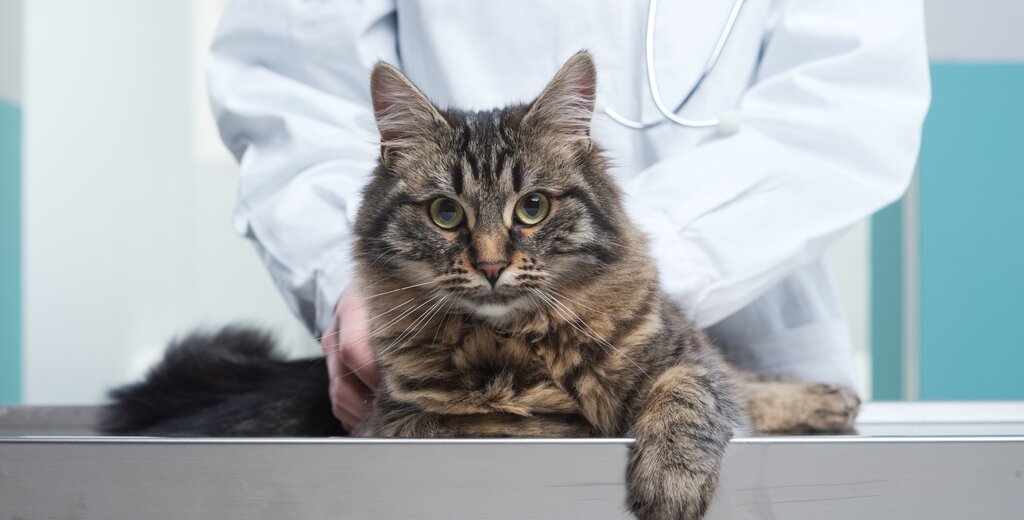Last Updated: 04/11/2025
Isoxazolines and Seizures: A Vet's Guide to Flea & Tick Products
Are isoxazoline flea and tick products safe? Our vet guide explores the link between products like Bravecto, Nexgard, and Simparica and neurological issues, helping you weigh the risks and benefits for your pet's protection.
Author: Dr Josepha Cox BBiomedSc (Hons) DVM
Reading Time: 7 minutes - short read
Products like Bravecto, Nexgard, Simparica and Credelio Plus are common flea and tick treatments. They belong to a drug class called isoxazolines, which are highly effective at protecting pets from parasites, including the deadly paralysis tick.
However, you may have heard concerns linking these products to neurological side effects, such as seizures. This has led many pet parents to question their safety. While thousands of pets use these products safely every day, regulatory agencies have acknowledged rare but potential adverse events.
This guide will help you understand the benefits versus the rare risks, so you can make an informed choice with your vet.
What are isoxazolines?

Isoxazolines (pronounced eye-sox-a-zo-leens) are a modern and highly effective class of parasite preventative.
If you're a pet parent in Australia, you are almost certainly familiar with the brand names, even if you don't know the drug class. This group includes some of the most popular products vets recommend, such as Bravecto, Nexgard, Simparica, Credelio, and Revolution Plus, as well as their combination versions (like Spectra, Trio, or Plus).
These treatments provide 'broad-spectrum' protection, which is a veterinary way of saying they protect your dog or cat from a wide range of nasty parasites. Their primary job is to kill fleas and ticks, and they are extremely good at it. More importantly, by killing ticks quickly, they are a frontline defence against the dangerous, and often fatal, diseases these parasites carry, including tick paralysis.
Common isoxazolines in Australia
Why are these products so important?

The introduction of isoxazolines to the market a number of years ago was a complete game-changer for veterinary medicine. Their effectiveness in parasite control is truly second to none, leading to a significant and positive impact on pet health across Australia.
Veterinarians working in high-risk, "tick-prone" areas, such as the East Coast, have reported a dramatic drop in the number of dogs and cats presenting with tick paralysis. This is incredibly welcome news. Tick paralysis is a terrifying and devastating condition for pets and their families. It is not only extremely expensive to treat - often requiring days of intensive hospital care - but it can also be fatal.
The importance of reliable prevention has been highlighted even more recently. In 2022 and 2023, Australia faced a nationwide shortage of tick antiserum, the essential treatment used to save pets' lives. Preventing a tick bite in the first place is more important than ever.
What about the risk of seizures?

Most clinics across Australia confidently stock and dispense isoxazoline products. We recommend them because we have seen the devastating alternatives - tick paralysis, flea allergy dermatitis and other parasite-borne diseases. Many vets have used or currently use these exact products on our own pets.
However, you may have seen discussions online or heard from other pet owners about a potential link to neurological issues. This has understandably created hesitancy and concern, with reports of seizures, muscle tremors, or incoordination (ataxia) in some animals after receiving a dose.
This is where the topic becomes complex, and it's important to separate a "report" from proven "causation." When millions of doses of any medication are given, a certain number of pets will experience a health issue in the days or weeks following. It is often impossible to determine if the medication was the true cause, or if the pet was unfortunately going to develop that condition regardless.
Despite this difficulty, a number of reports have been made. In response, regulatory agencies and the manufacturers themselves have done the responsible thing and included warnings of these "rare but potential adverse events" on the product labels. This is an act of transparency and precaution.
What does this mean for my pet?

The overwhelming majority of dogs and cats do not experience any problems. Many thousands of these products are used safely and effectively across Australia every single year.
The primary concern is for pets with a known history of seizures or other neurological conditions, such as epilepsy. For these animals, your vet may agree the risk, while still low, is one you should avoid, and they will help you choose a different type of preventative. While a pre-existing condition is the main risk factor, it's true that in very rare instances, these issues have been reported in pets with no previous history at all.
As a starting point it's always important to discuss any concerns with your veterinarian. Your pets medical history as well as the risk of ticks in your area can be taken into consideration as to whether these products would be suitable for them.
Vet recommendations for your pet
For most pets in paralysis tick areas (e.g. the East Coast of Australia)
Using an isoxazoline product is strongly recommended. Most Australian vets agree that the significant benefit of preventing potentially fatal tick paralysis far outweighs the very low risk of adverse effects.
For pets with a history of seizures living in tick areas
You must consult your veterinarian. These pets may have a greater risk of side effects. Your vet can discuss alternative products, such as Advantix (for dogs only) or a Seresto collar (for dogs and cats). While these alternatives are not in the isoxazoline class, they are generally considered less effective. However, using them is significantly better than having no tick protection at all.
For pets living in non-paralysis tick areas
You have more flexibility. You can comfortably choose an isoxazoline or one of the other products mentioned. It's still important to have tick protection, as other species like the brown dog tick and the bush tick can still cause significant irritation and spread disease.
A special note for some areas (e.g. Northern Territory and Western Australia)
Due to the high risk of a different tick-borne disease called Ehrlichiosis, products like Advantix or Seresto are often the preferred choice in these regions, as they help to repel ticks before they attach to your pet. Your local vet will have the best advice for your specific area.
Read through our guides to Flea, Tick and Worming Protection for Dogs, and Flea, Tick and Worming Control for Cats for more information.
FAQs
Ultimately, isoxazolines are a safe and highly effective option for the vast majority of pets. They are a vital tool in preventing tick paralysis, a risk that is often far greater than the rare chance of neurological side effects. If your pet has a history of seizures, or if you have any concerns at all, it's always best to have a conversation with your vet. They can help you weigh the risks and benefits for your pet's specific situation and choose the right protection for your peace of mind.
References
https://www.fda.gov/animal-veterinary/animal-health-literacy/fact-sheet-pet-owners-and-veterinarians-about-potential-adverse-events-associated-isoxazoline-flea
https://wayback.archive-it.org/7993/20201222192100/https://www.fda.gov/animal-veterinary/cvm-updates/animal-drug-safety-communication-fda-alerts-pet-owners-and-veterinarians-about-potential-neurologic
https://www.avma.org/javma-news/2018-11-15/four-flea-tick-products-linked-seizures-ataxia
https://www.bravecto.com.au/attachments/bravecto_product_label.pdf
https://websvr.infopest.com.au/LabelRouter?LabelType=L&Mode=1&ProductCode=80948
https://www.ncbi.nlm.nih.gov/pmc/articles/PMC6686215/
https://www.ncbi.nlm.nih.gov/pmc/articles/PMC7738705/
https://www.ava.com.au/news/member-alert-paralysis-tick-antiserum-shortage/
https://www.walkervillevet.com.au/blog/simparica-dog-tick-treatment-seizures
Articles recommended for you
Our vet authored guide to the benefits of feeding your dog fresh food plus tips and advice for introducing it into their regular menu.
See our guide to protecting your pet from parasites from our vet team.
Thinking of getting a fish? Check out our guide for setting up a tank and home care tips!
Looking to understand horse feeds better? This comprehensive guide covers feeding recommendations for horses of all ages and disciplines.
Does your pet suffer from anxiety? Check out our Vet-guide for treatment options to help your pet.
History
Our experts continually monitor the health and wellness space and we update our articles when new information becomes available.
Tue 4 Nov 2025
Edited by Dr Gillian Hill BVSc (Hons)Dr Josepha Cox BBiomedSc (Hons) DVM
Author, BBiomedSc (Hons) DVM
Dr Josepha graduated from the University of Melbourne in 2015 and has spent her time in small animal practice in Melbourne. She has a special interest in diagnostic imaging, nutrition and geriatric medicine. She is currently completing further study in animal nutrition and her favourite part of being a vet is helping senior animals to live happily and comfortably into their twilight years.

